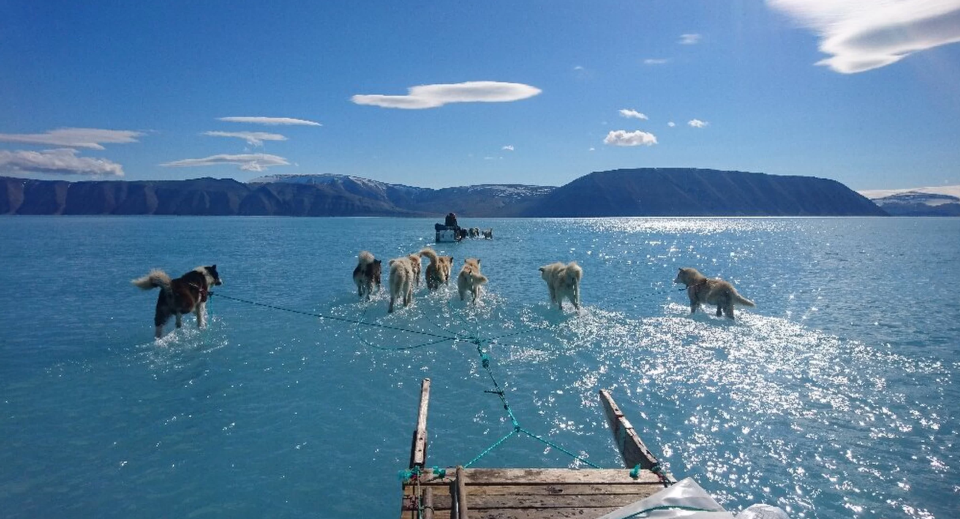Greenland’s sea ice is melting as temperature soars to new heights

A climate scientist has captured an image which lays bare the horrifying reality of melting ice in Greenland - as sled dogs splash through blue water instead of ice.
The image, taken by Steffen Olsen, of the Danish Meteorological Institute (DMI), shows what Olsen describes as ‘rapid melt’.
Temperatures have soared above normal levels in Greenland in recent weeks, with the annual ice melt arriving early, experts say.
In recent days, the ice over the Arctic Ocean has shrunk back to an extent never seen since weather satellites first took images.
Jason Box, an ice climatologist at the Geological Survey of Denmark and Greenland said, ‘The melting is big and early.’
Read more from Yahoo News UK:
Boris Johnson one step closer to becoming Prime Minister
'Neo-nazis' paint swastikas on walls of occupation bunker in Jersey
Black cab rapist John Worboys admits to four additional sex attacks
Olsen said, ‘Communities in Greenland rely on the sea ice for transport, hunting and fishing.
‘Extreme events, here flooding of the ice by abrupt onset of surface melt call for an incresed predictive capacity in the Arctic.’
It’s not the only area seeing unheard-of melting.

Cold War-era spy satellite images have shown scientists that glaciers on the Himalayas are now melting twice as fast as they used to.
The Asian mountain range, which includes Mount Everest, has been losing ice at a rate of about 1% a year since 2000, according to a study in the journal Science Advances.
https://twitter.com/SteffenMalskaer/status/1139550265634381824
'The amount of ice (lost) is scary but what is much more scary is the doubling of the melt rate,' said Josh Maurer, a glacier researcher at Columbia University's Lamont Doherty Earth Observatory and lead author of the study.
The Himalayas, part of an area that is referred to as 'The Third Pole' because it has so much ice, has only 72% of the ice that was there in 1975.
It has been losing about 7.5 billion tonnes of ice a year, compared to 3.9 billion tonnes a year between 1975 and 2000, according to the study.
The loss of ice means current and future disruptions of water supplies - both surges and shortages - for the hundreds of millions of people in the region who rely on it for hydropower, agriculture, and drinking, said study co-author Jorg Schaefer, a climate geochemistry professor at Columbia.
'Disaster is in the making here,' Mr Schaefer said.
